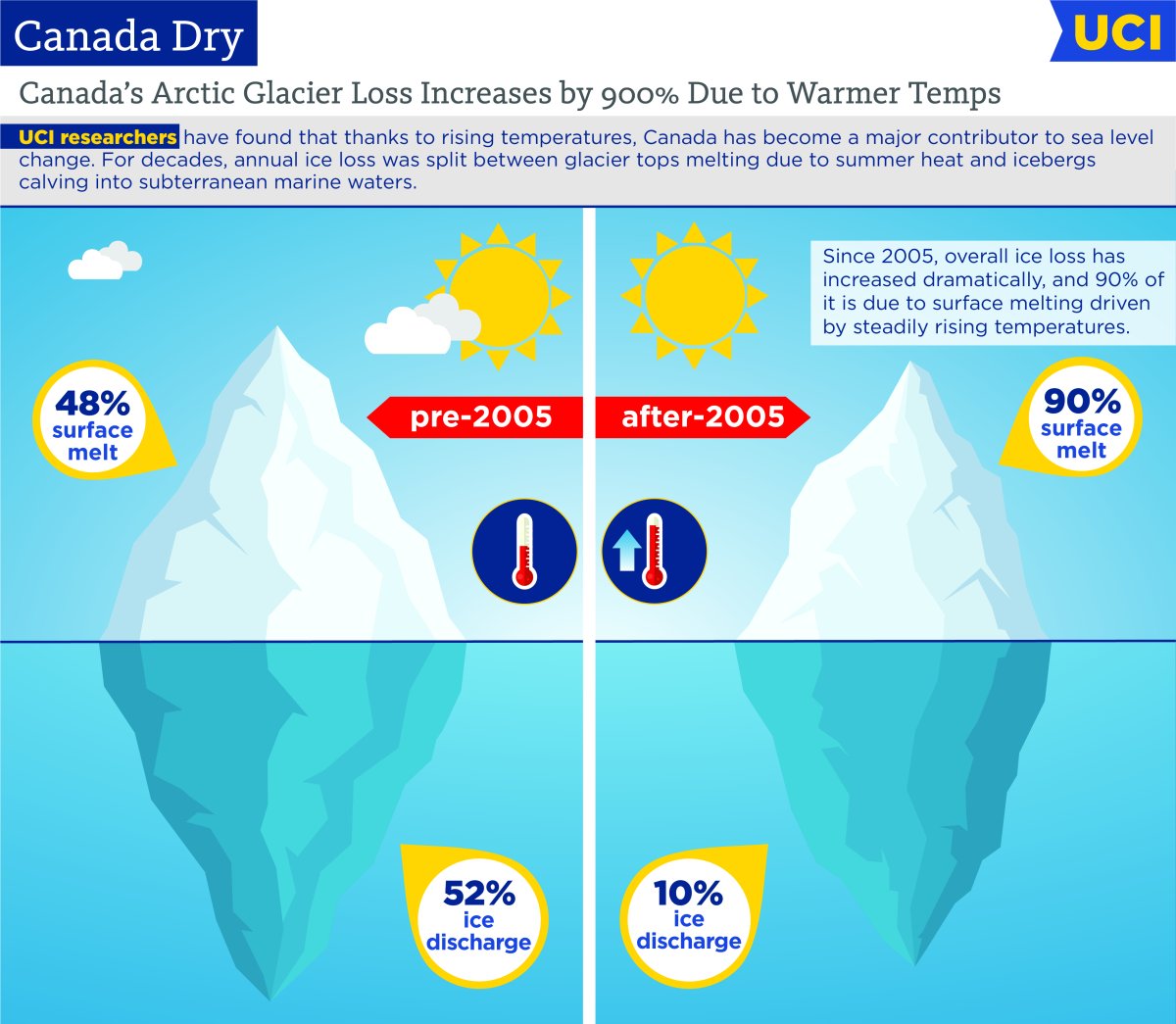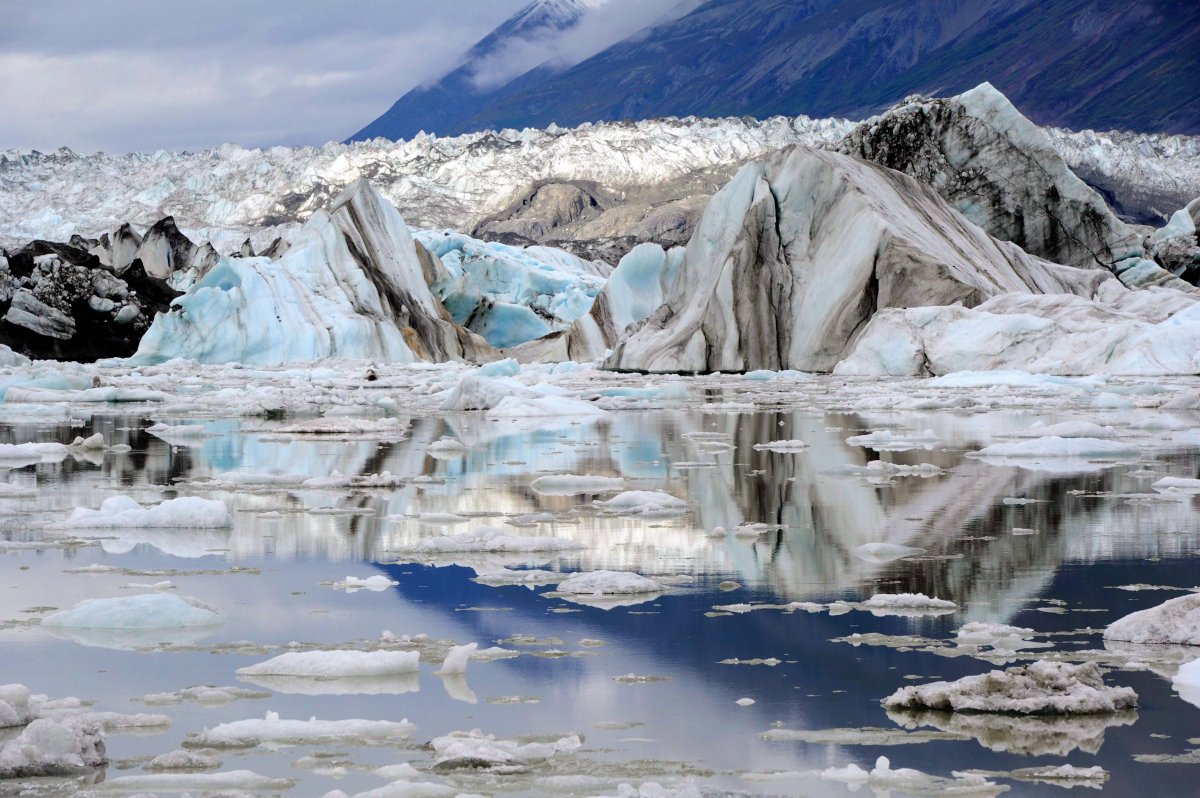Canada’s Arctic glaciers have become a major contributor to sea level change, according to glaciologists at the University of California, Irvine (UCI).

The Queen Elizabeth Islands, which include Ellesmere Island and dozens more, saw surface melt on its ice caps and glaciers accelerate by 900 per cent over the course of a decade.
It went from three gigatons per year in 2005 to 30 gigatons per year in 2015, the research shows.
Greenland holds most of the ice in the Arctic, and its melting glaciers have been the focus of much scientific research in recent years.
But Canada holds the second-most ice in the region, with 25 per cent of the volume there.
READ MORE: Glacier retreat evidence of climate change in South America
Up until 2005, two factors were nearly equal contributors to Arctic ice loss.
Icebergs breaking off into the ocean from glacier fronts accounted for 52 per cent of the loss, while surface melting on glaciers (ice that was exposed to sun and air) was responsible for 48 per cent.
Things have changed since then. Surface melt came to account for 90 per cent of ice loss by 2015. And that trend came at a time in which atmospheric temperatures “steadily climbed,” according to UCI.
“It was surprising there was so much surface melt compared to the ice discharge into the ocean,” says UCI’s lead author, Romain Millan.
The Arctic is warming faster than other parts of the world and the surface melt caused by warmer air temperatures is “a very good indicator of climate change,” Millan adds.
The findings come as no surprise to John Bennett with Friends of the Earth Canada.
“This is a huge warning sign.”
It’s an indication that the science around climate change is correct, he adds.
It’s up to Ottawa to show more urgency toward the problem, as the federal government’s focus on the Arctic has lagged, Bennett says.
He says the previous government under prime minister Stephen Harper “deliberately shut down its scientific capability to understand the issue.”
But Bennett also criticizes the current government, which has continued to approve pipelines.
“We have to hugely accelerate our reaction to reduce our use of fossil fuels,” Bennett says.
Society is responding far too slowly, in the view of many climate change advocates.
“We have to forget how our economy used to work and start building a new economy so we can protect future generations,” Bennett says.
Most Canadians live thousands of kilometers from the Queen Elizabeth Islands — so perhaps it’s a case of “out of sight, out of mind” for many people.
But it is Canada’s piece of the Arctic and if Canadians do not take action quickly enough to address climate change in the region, who will?






Comments